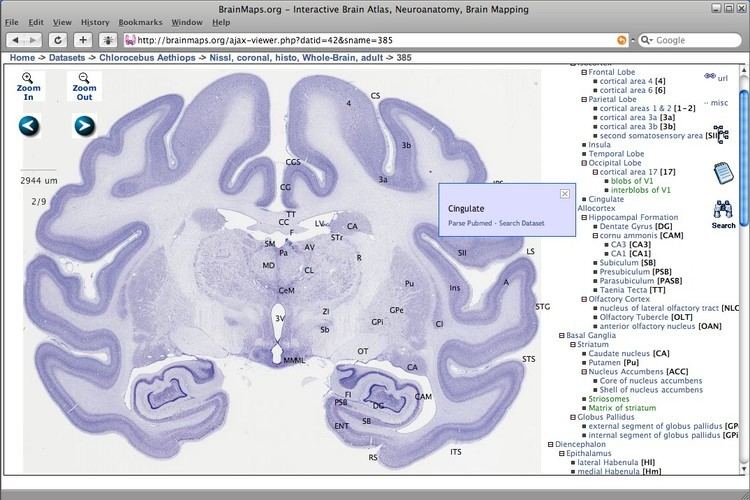 | ||
Organisms Monkey, cat, mouse and owl License All image dataset is copyrighted to their respective owners, if none indicated, to the UC Regents Davis campus. | ||
BrainMaps is an NIH-funded interactive zoomable high-resolution digital brain atlas and virtual microscope that is based on more than 20 million megapixels (60 terabytes) of scanned images of serial sections of both primate and non-primate brains and that is integrated with a high-speed database for querying and retrieving data about brain structure and function over the internet.
Currently featured are complete brain atlas datasets for the species Macaca mulatta, Chlorocebus aethiops, Felis silvestris catus, Mus musculus, Rattus norvegicus, and Tyto alba.
The project is led by Ted Jones and Shawn Mikula at the University of California, Davis .
Description
BrainMaps uses multiresolution image formats for representing massive brain images, and a dHTML/Javascript front-end user interface for image navigation, both similar to the way that Google Maps works for geospatial data.
BrainMaps is one of the most massive online neuroscience databases and image repositories and features the highest-resolution whole brain atlas ever constructed.
Extensions to interactive 3-dimensional visualization have been developed through OpenGL-based desktop applications. Freely available image analysis tools enable end-users to datamine online images at the sub-neuronal level. BrainMaps has been used in both research and didactic settings.
